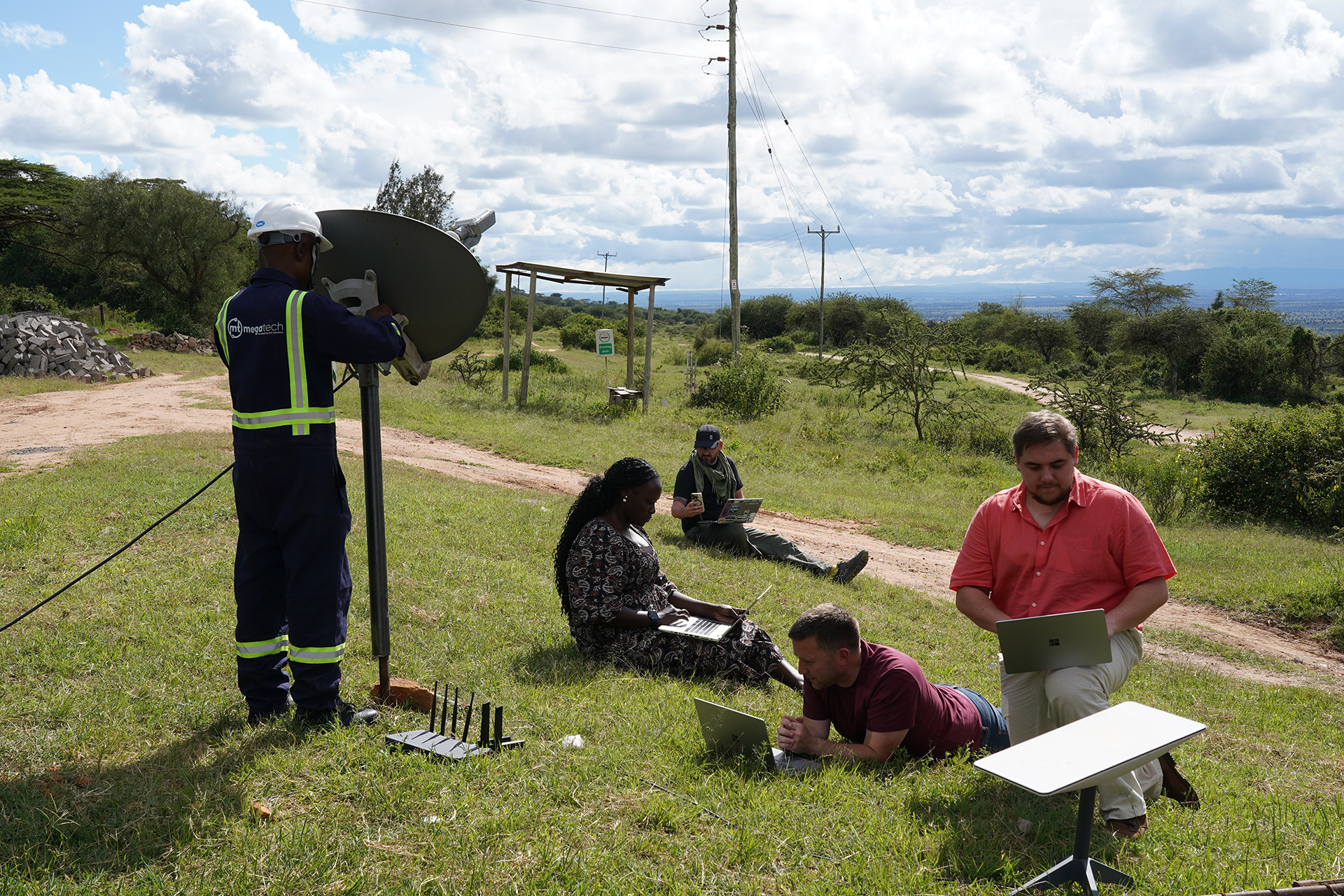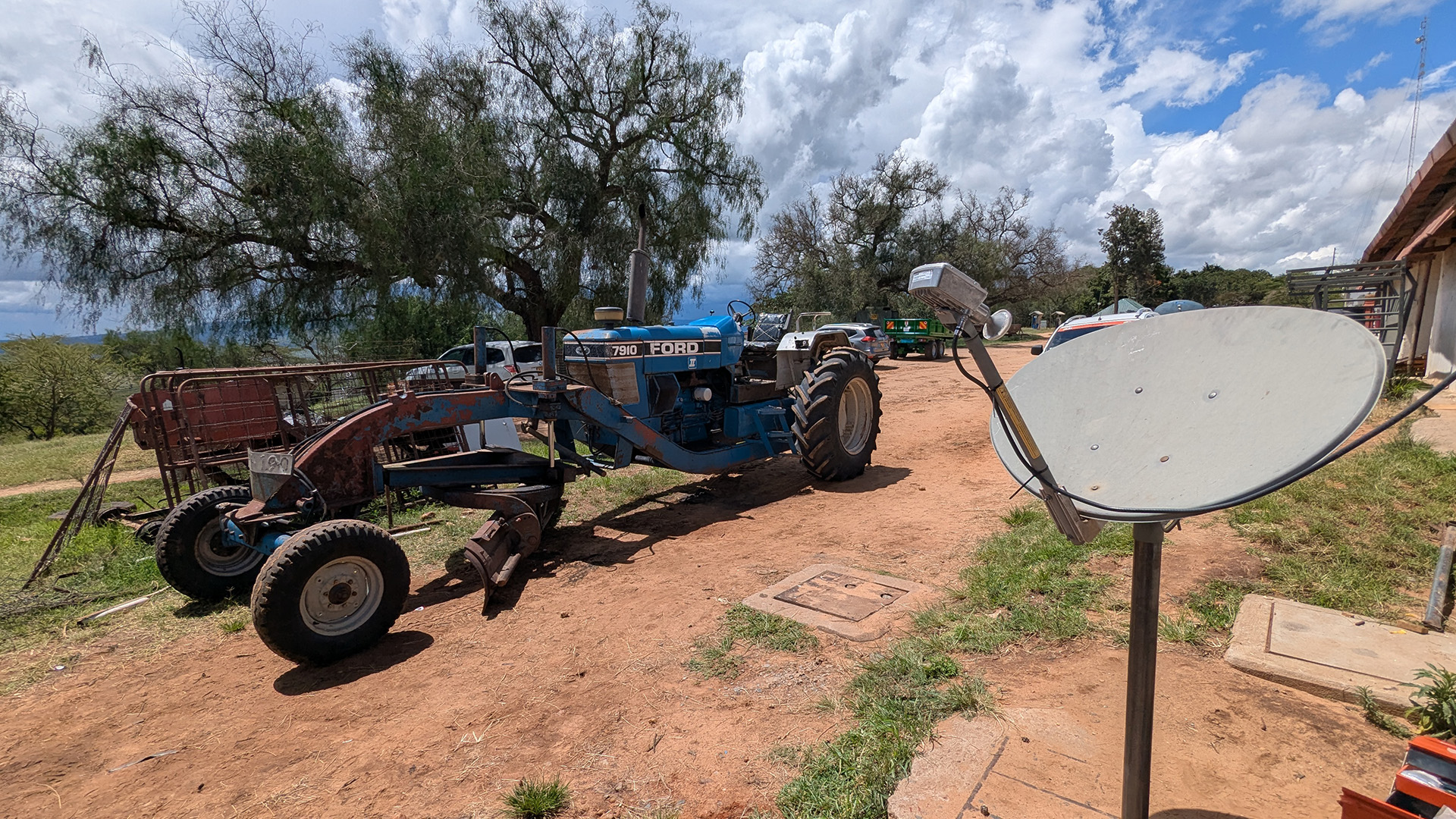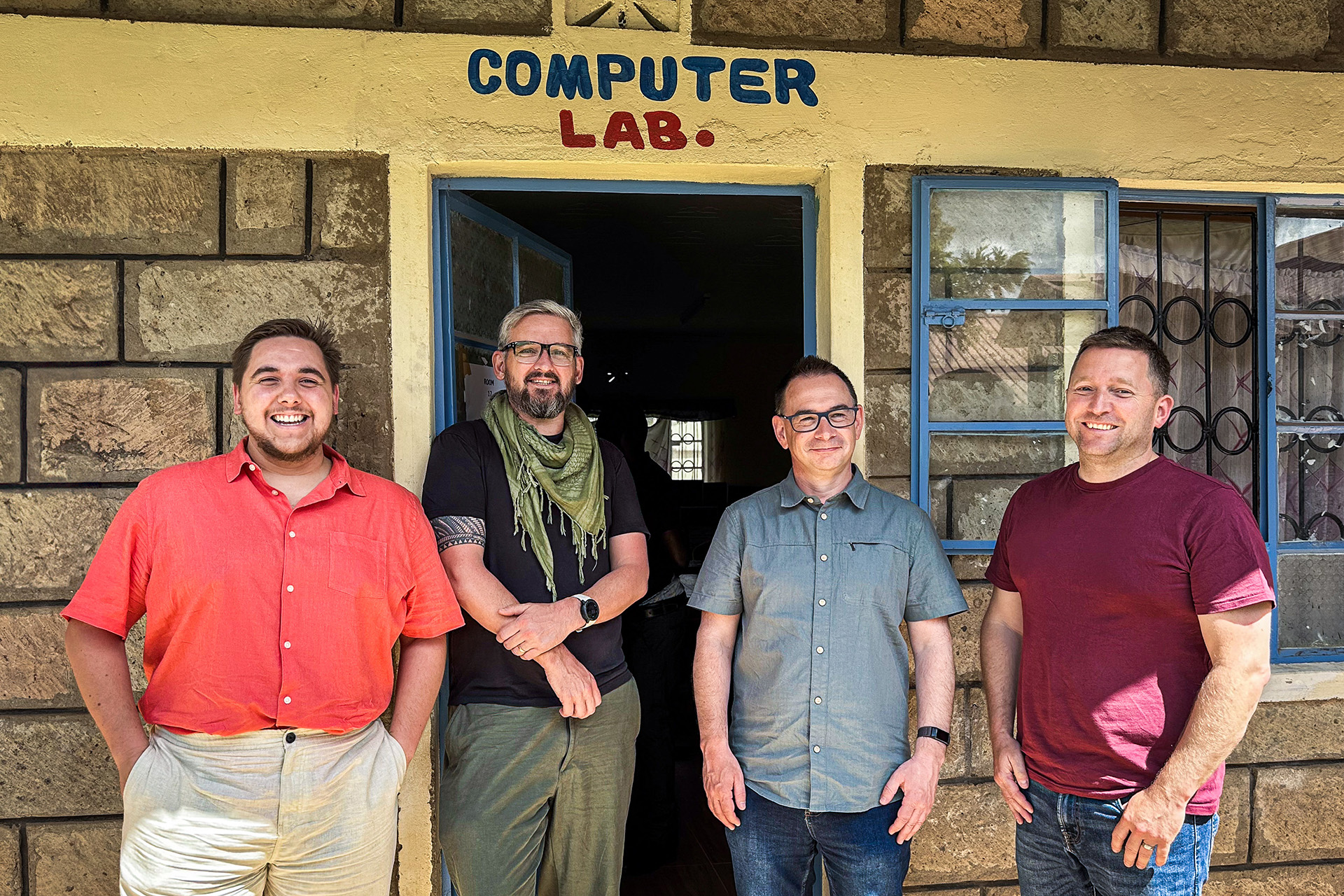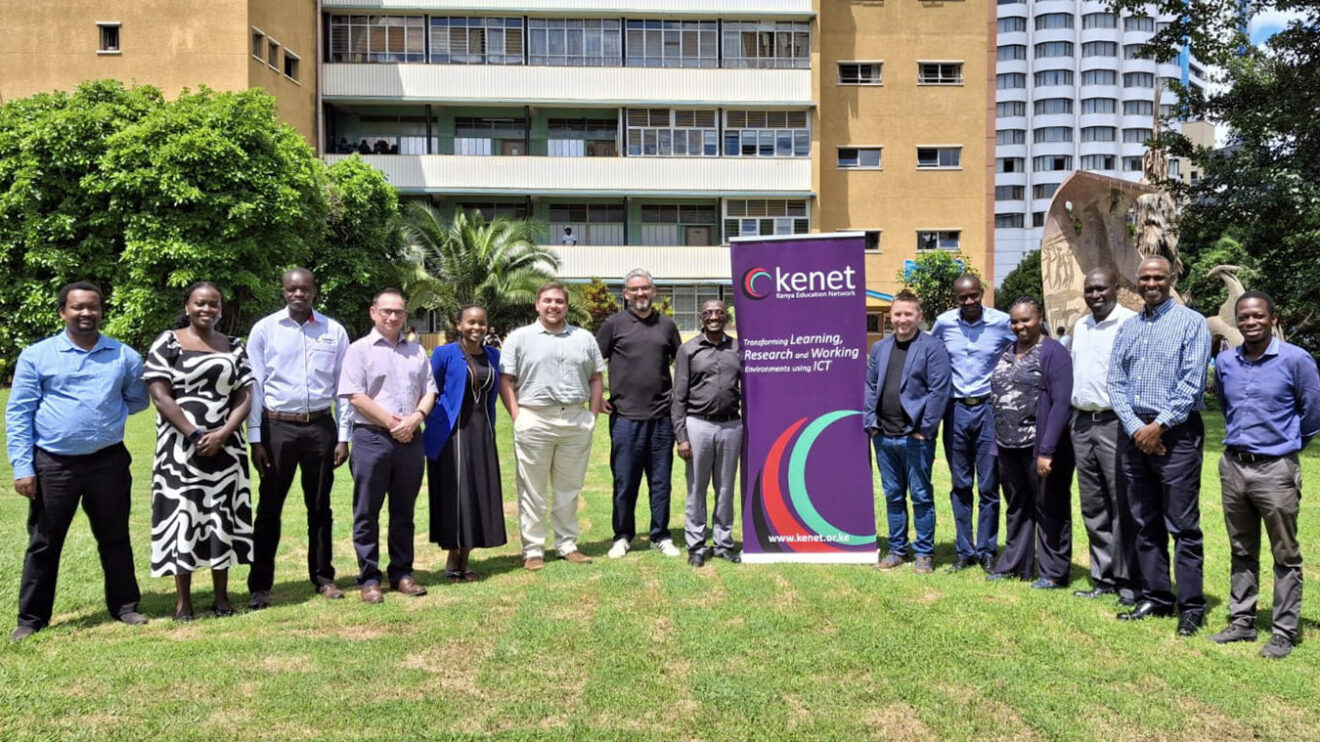From the bustling offices of Nairobi to the remote wildlife conservancy of Kapiti, a groundbreaking collaboration between Jisc and Kenya Education Network Trust (KENET) has demonstrated how satellite technology can revolutionise research connectivity in Africa.When researchers venture into remote locations to conduct vital work, reliable internet connectivity often becomes their biggest challenge. This reality sparked an innovative partnership between Jisc, the UK’s National Research and Education Network (NREN), and KENET, Kenya’s NREN, through the GÉANT Twinning Programme.
Testing the Boundaries of Connectivity
The project began with a simple but ambitious question: could satellite internet extend eduroam access to researchers working in remote African locations where traditional broadband infrastructure doesn’t exist?
Initial testing took place at KENET’s offices in Nairobi, where the teams navigated local licensing restrictions and technical challenges. Despite having to adapt their usual Ericsson hardware setup to work with Cisco equipment, the collaborative troubleshooting process strengthened the partnership and demonstrated the resilience needed for international projects.

The real test came when the teams deployed their solution 60 kilometres outside Nairobi at the Kapiti Research Station and Wildlife Conservancy. This remote location, which hosts researchers from around the world studying wildlife conservation, had never had eduroam access – making it the perfect proving ground for their satellite-enabled solution.
Results That Surprised Everyone
The connectivity tests revealed remarkable performance across different backhaul services:
- Satellite Internet (Starlink): 147 Mbps download, 24 Mbps upload, with latency as low as 25ms
- Mobile Data (Safaricom): 147 Mbps download, 9 Mbps upload, though with higher latency at 206ms
These results demonstrated that satellite connectivity could not only work in remote research locations but could actually outperform traditional mobile data solutions in terms of upload speeds and latency – crucial factors for researchers sharing data and collaborating globally.

Opening New Possibilities
The success at Kapiti has revealed numerous practical applications for extending eduroam through satellite connectivity:
- Permanent remote campuses can now access secure, authenticated internet without waiting for terrestrial infrastructure.
- Emergency backup solutions provide continuity during fibre breaks or service disruptions.
- Mobile research initiatives can deploy portable, solar-powered connectivity kits anywhere with clear sky access.
David Patterson, Head of International at Jisc, reflects on the broader impact: “This project exemplifies how NREN collaboration can break down barriers. When we share expertise and resources, we can solve challenges that seemed impossible for any single organisation.”
Lessons From the Field

The project highlighted key insights for future international collaborations:
- Local regulations matter. Hardware availability and licensing requirements vary dramatically between countries. What works in the UK might need substantial adaptation elsewhere.
- Flexibility proves essential. The ability to deploy eduroam anywhere with power (mains, battery, or solar) and a clear sky view opens unprecedented possibilities for research connectivity.
- Time remains the biggest barrier. While technical challenges can be solved, securing funding for staff time to enable deep international collaboration requires sustained commitment from all partners.
A Blueprint for Global Connectivity
When the teams shared their findings at TNC25 in Brighton, the response from other NRENs was immediate and enthusiastic. The project demonstrated not just technical feasibility but a scalable model for extending secure connectivity to underserved regions worldwide.
The collaboration has strengthened both organisations’ understanding of how NRENs can support global research initiatives. For KENET, it provided access to Jisc’s technical expertise and hardware solutions. For Jisc, it offered invaluable insights into deploying technology in challenging environments with different regulatory landscapes.
Looking Ahead
This successful partnership through the GÉANT Twinning Programme proves that when NRENs combine their expertise, they can tackle challenges that benefit the entire global research community. The project has established a foundation for future collaborations and demonstrated how satellite technology can bridge the digital divide for research institutions.
As satellite internet continues to evolve rapidly, with providers like Amazon, Eutelsat, and SpaceX expanding coverage and improving performance, the potential applications will only grow. The work pioneered by Jisc and KENET provides a roadmap for other NRENs looking to extend connectivity to their most remote research sites.
The project embodies the GÉANT community’s commitment to ensuring that geographical boundaries don’t limit scientific collaboration. When researchers can stay connected wherever their work takes them, the entire global research enterprise becomes stronger.






